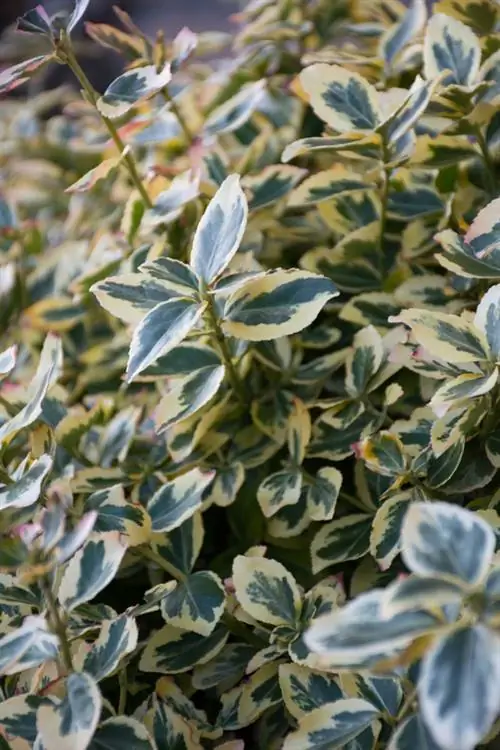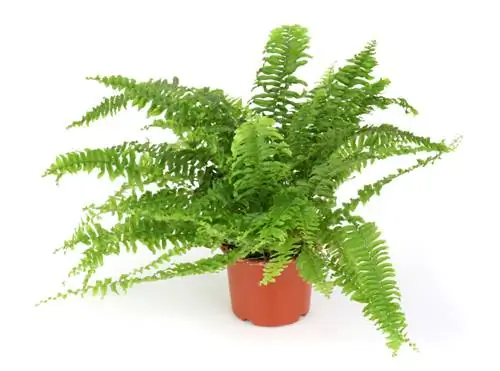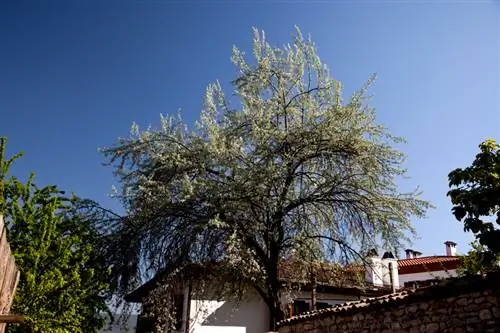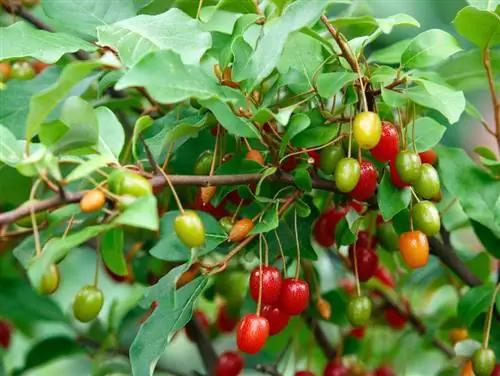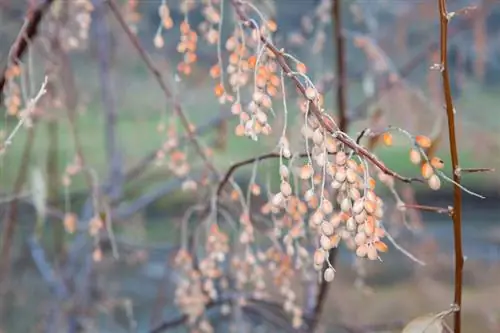- Author admin [email protected].
- Public 2023-12-16 16:46.
- Last modified 2025-01-23 11:20.
In our latitudes, the evergreen oil willow species only do not shed their leaves in the mild winters. When there is severe frost, the dark green foliage of the ornamental trees falls off; However, the bush sprouts again in spring.
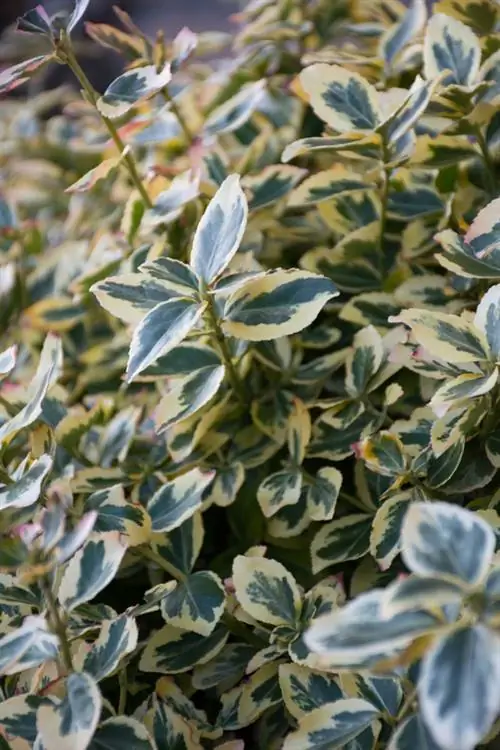
Are evergreen olive willows hardy and evergreen?
Evergreen oil willow species such as Elaeagnus ebbingei and Elaeagnus pungens are hardy and usually retain their foliage in winter. However, when there is severe frost, they drop leaves only to sprout again in spring. Young plants should receive additional winter protection during cold periods.
Olive willows (Elaeagnus) are a genus of plants with over 40 species from the oil willow family. The ornamental tree, which usually grows like a shrub, is robust, easy to care for and tolerates pruning. The shrubs are suitable for both solitary and group planting as well as for keeping in containers. Some Elaeagnus species can be easily grown into hedge plants or decorative standard trees.
Olive willow species
Most oil willow species originate in Asia and have different frost hardiness depending on the species. They also differ in height, foliage color and flowering time. The branches of some olive trees have thorns. Many oil willow species produce fruits that are edible. For the most part, olive willows are deciduous trees, e.g. B.
- Narrow-leaved olive willow (Elaeagnus angustifolia),
- Silver oil willow (Elaeagnus commutata),
- Edible oil willow (Elaeagnus multiflora), also called rich-flowered oil willow or Japanese oil willow.
- Coral oil willow (Elaeagnus umbellata), also called umbellate oil willow or umbrella oil willow.
Evergreen oil willow species
The most common evergreen ornamental trees in this country are wintergreen olive willow (Elaeagnus ebbingei) and thorny olive willow (Elaeagnus pungens). Elaeagnus ebbingei has an upright habit, while Elaeagnus pungens grows broadly. Both species are not very tall at around 2-2.5 m and have elliptical, elongated leaves that shine dark green on the upper side.
Caring for evergreen olive willows
The evergreen Elaeagnus species are sufficiently frost-resistant, but only retain their foliage in the mild winters. If the forest is severe, the leaves are shed, but only to sprout again in the spring. The older plants tolerate frost better than the younger ones. These should initially receive winter protection during long periods of cold.
A sheltered location in the sun or partial shade is an advantage. Olive willows tolerate dry soil well, but waterlogging should be avoided. Regular cutting measures and fertilizer applications are not necessary.
Tip
The late flowering period (between September and December) of the evergreen oil willow species makes them a valuable food source for insects, but is also the reason why the fruits usually do not ripen in this country.

